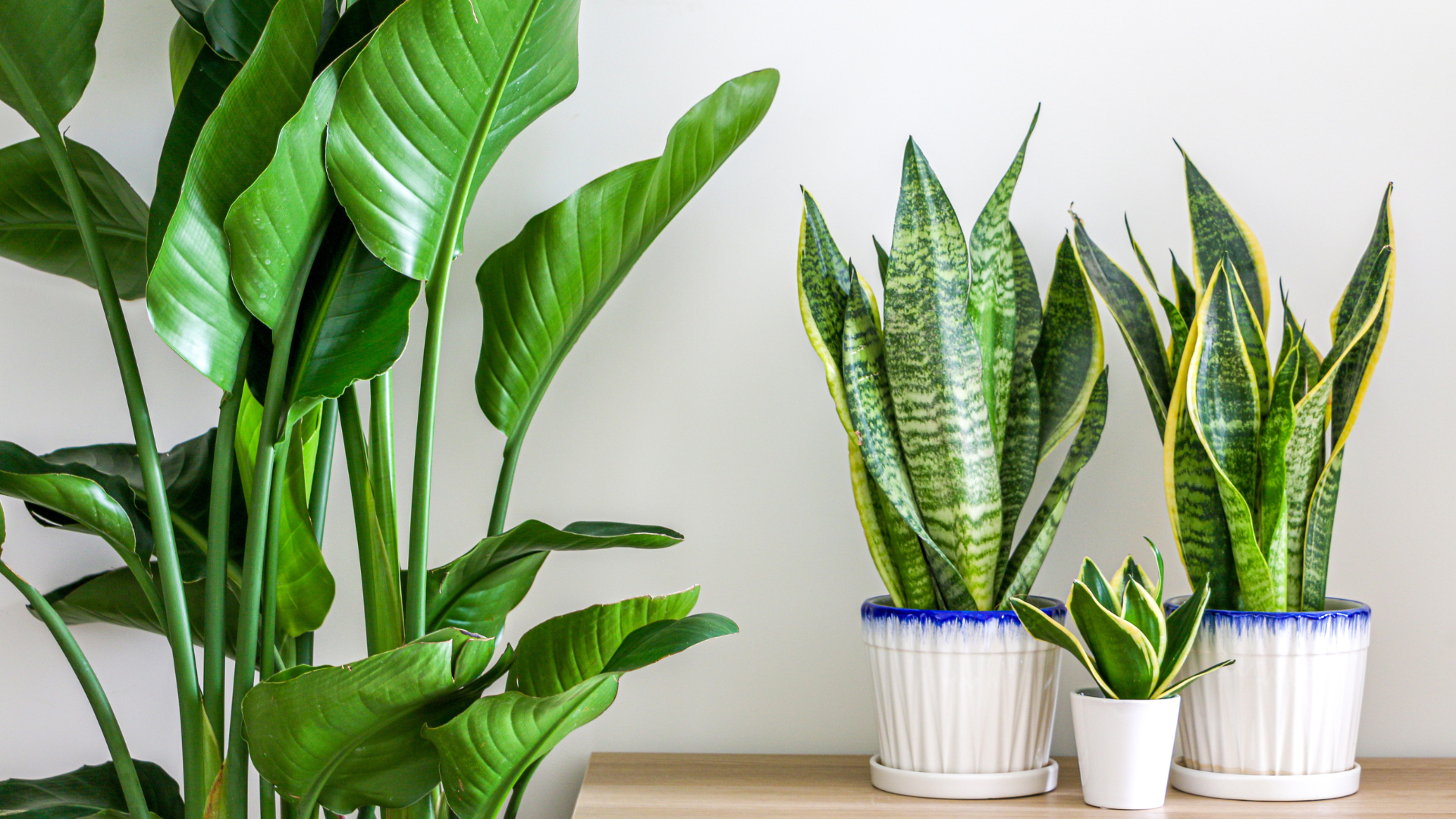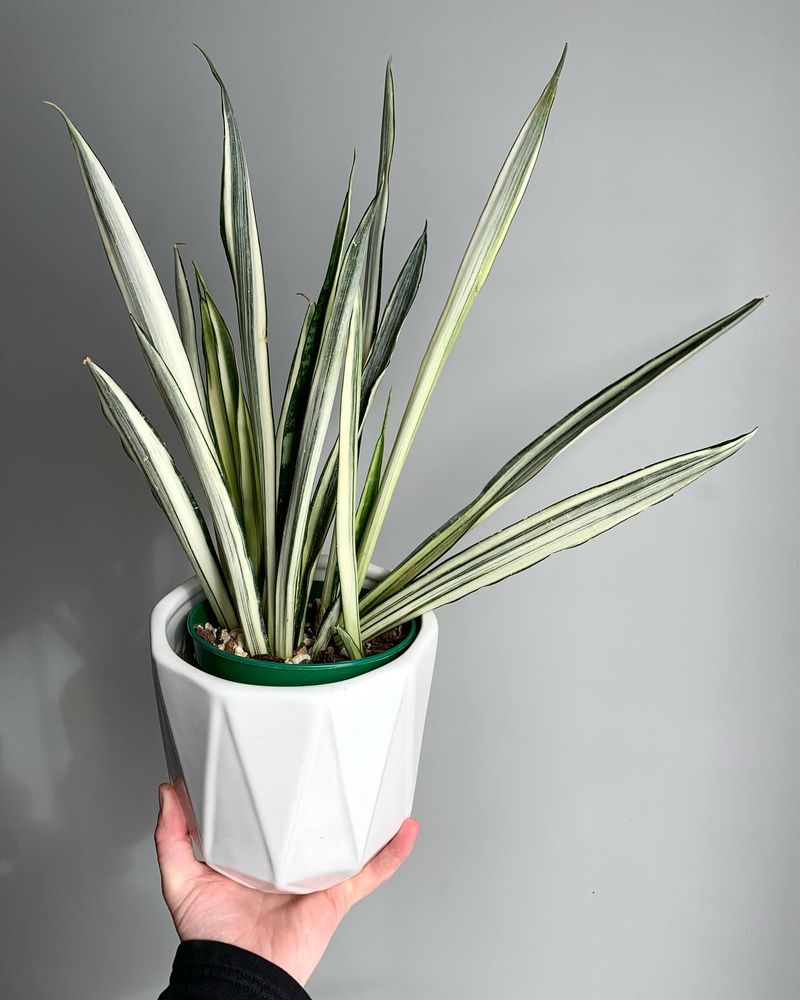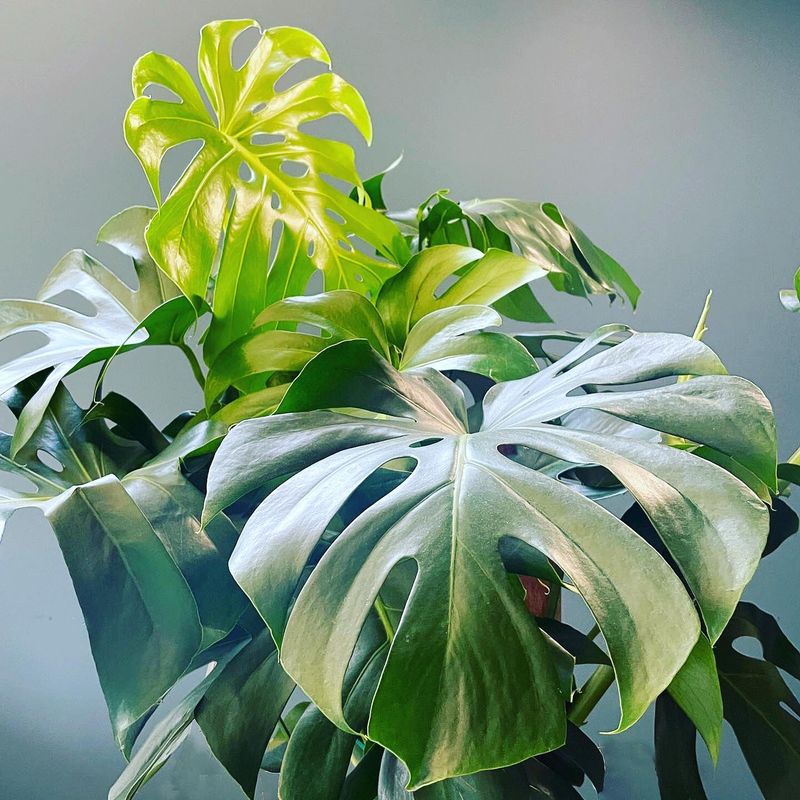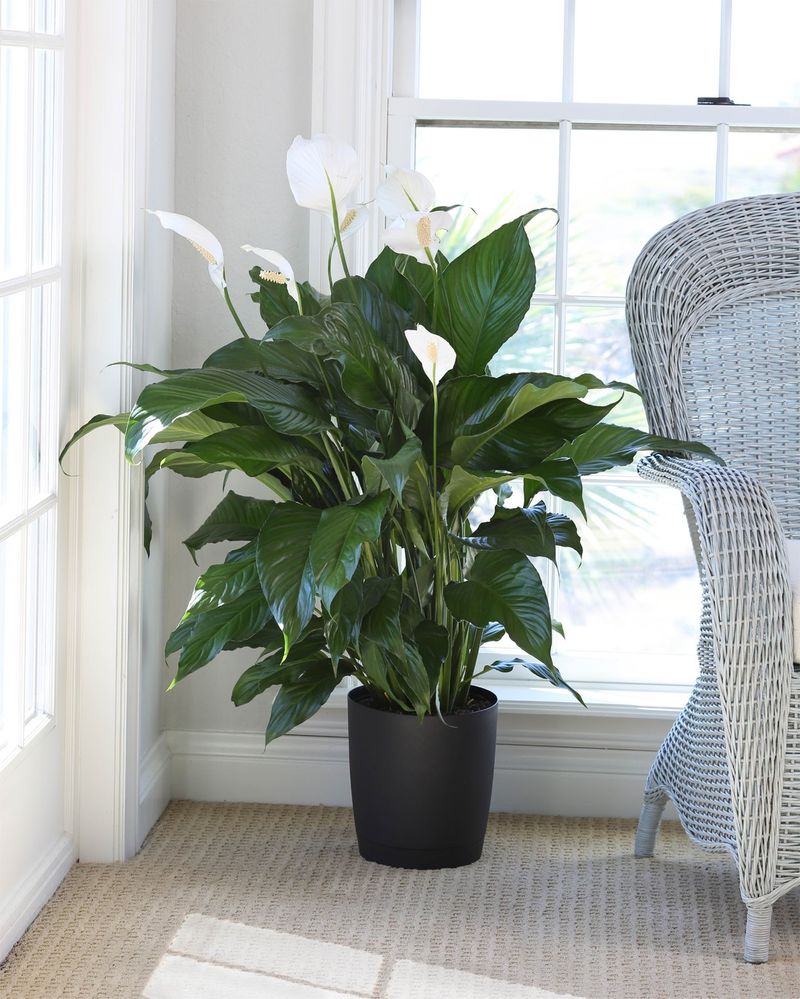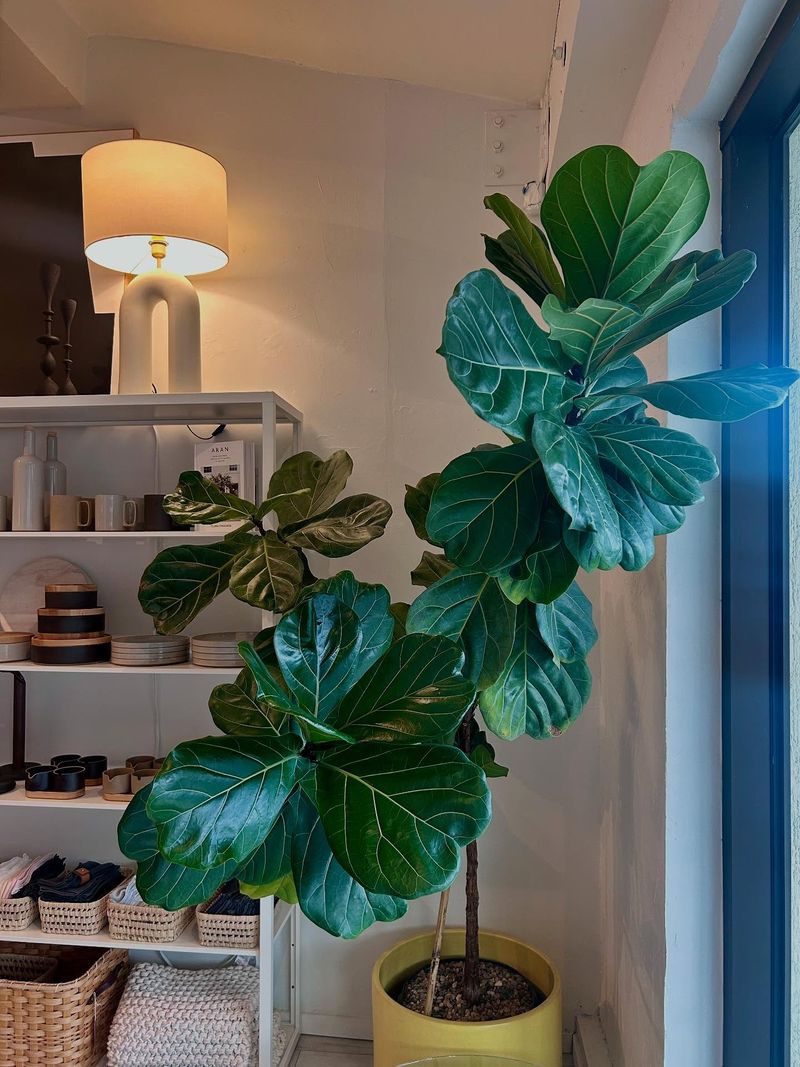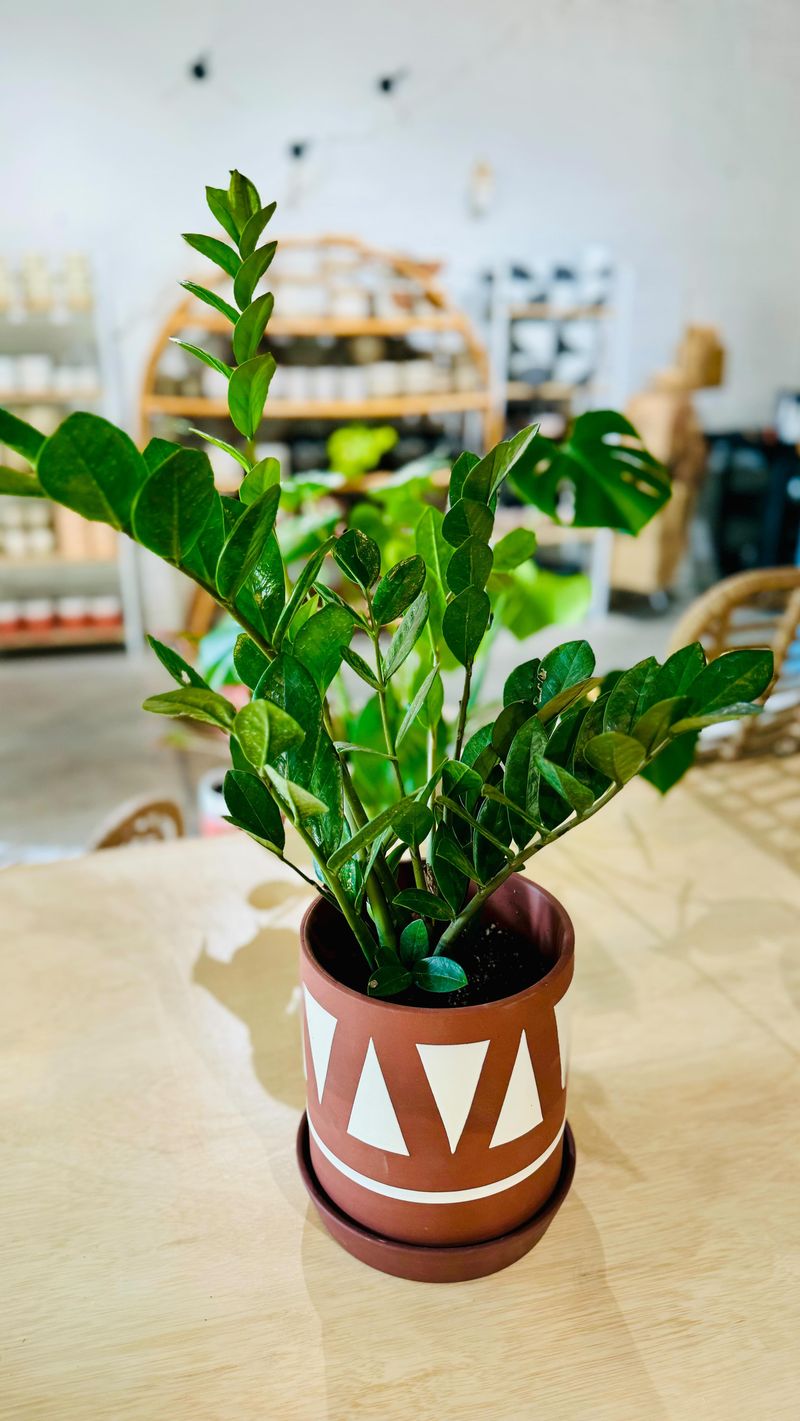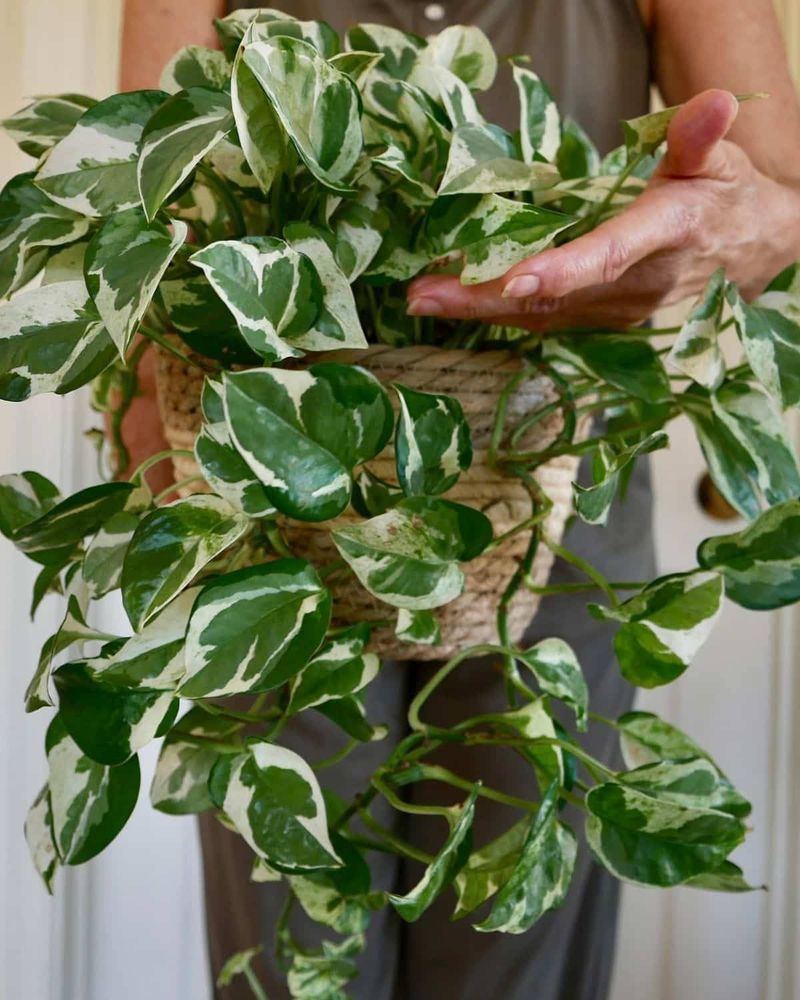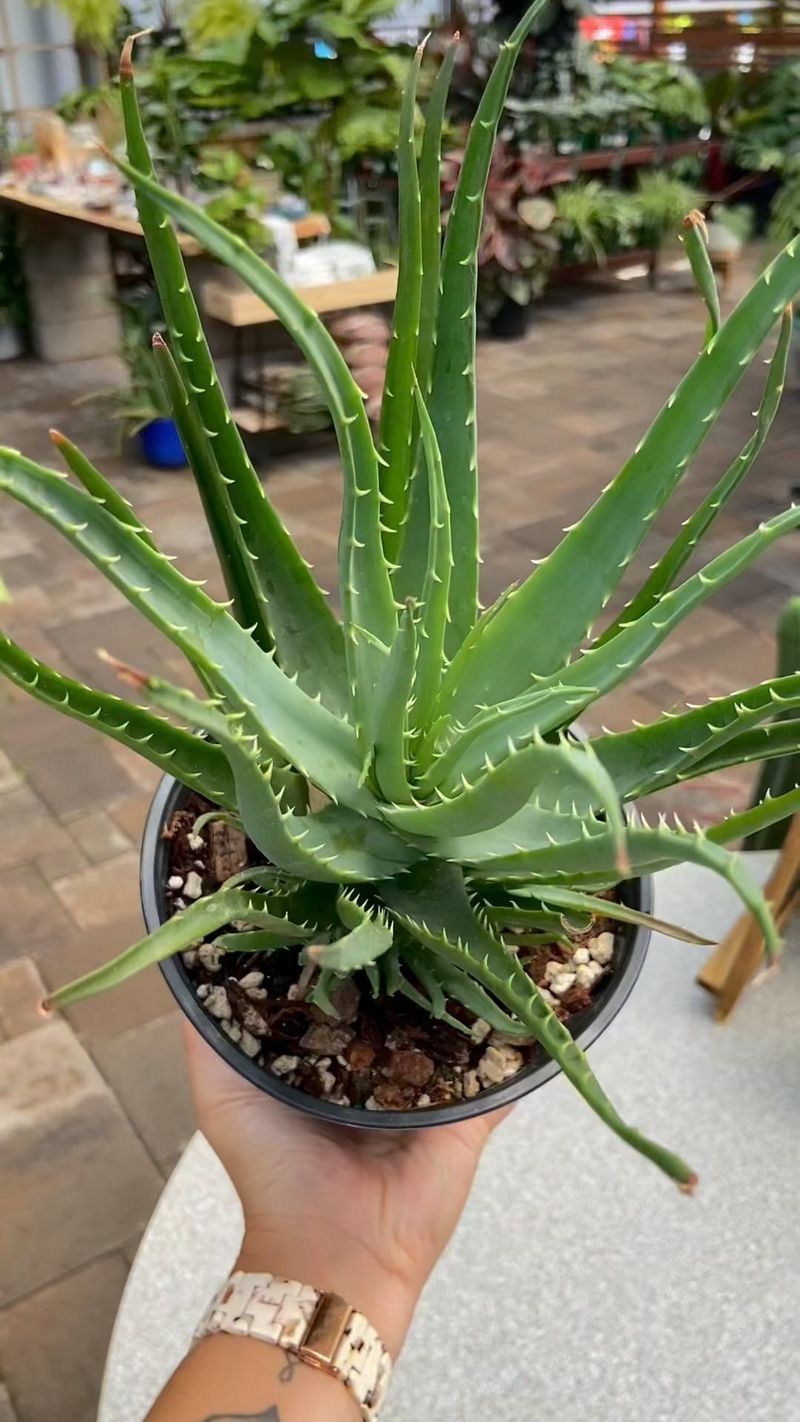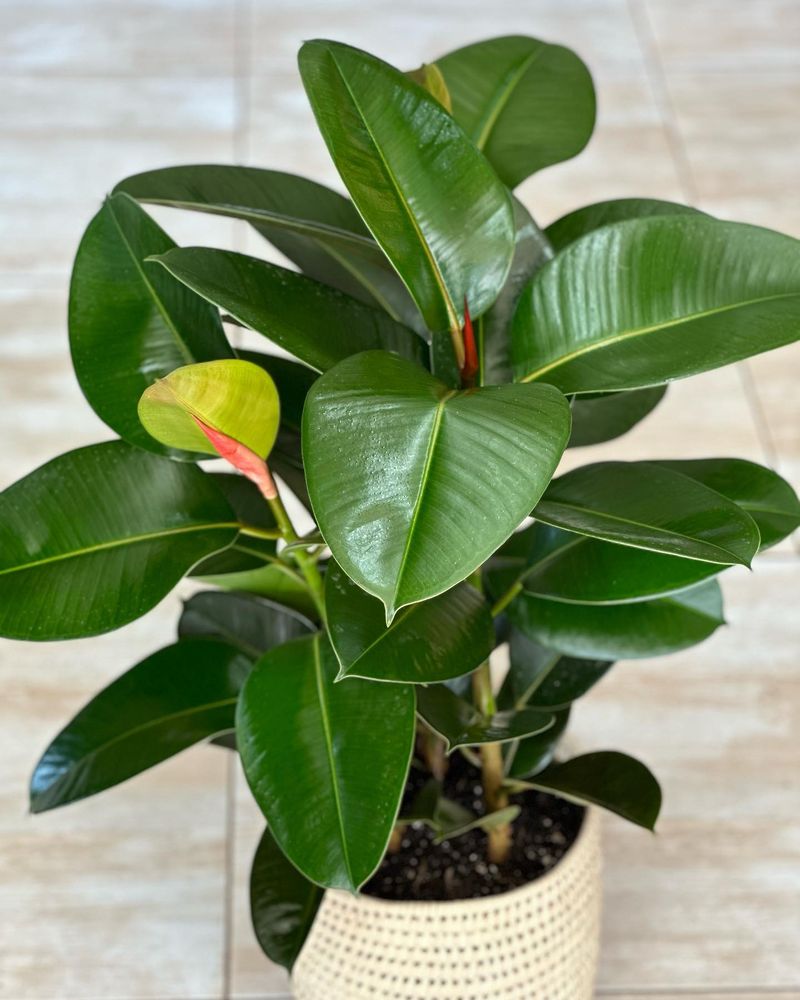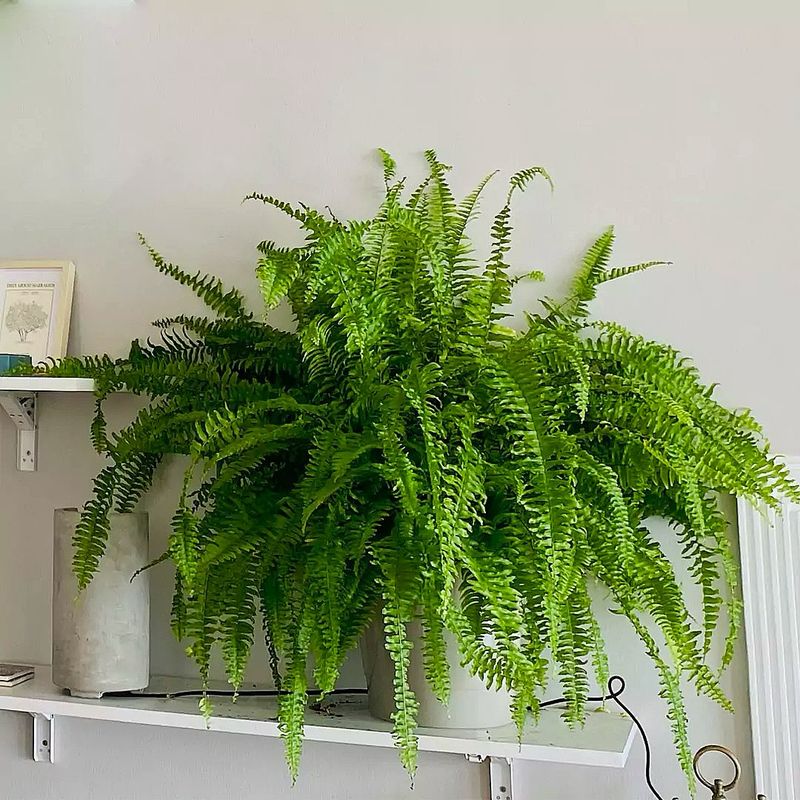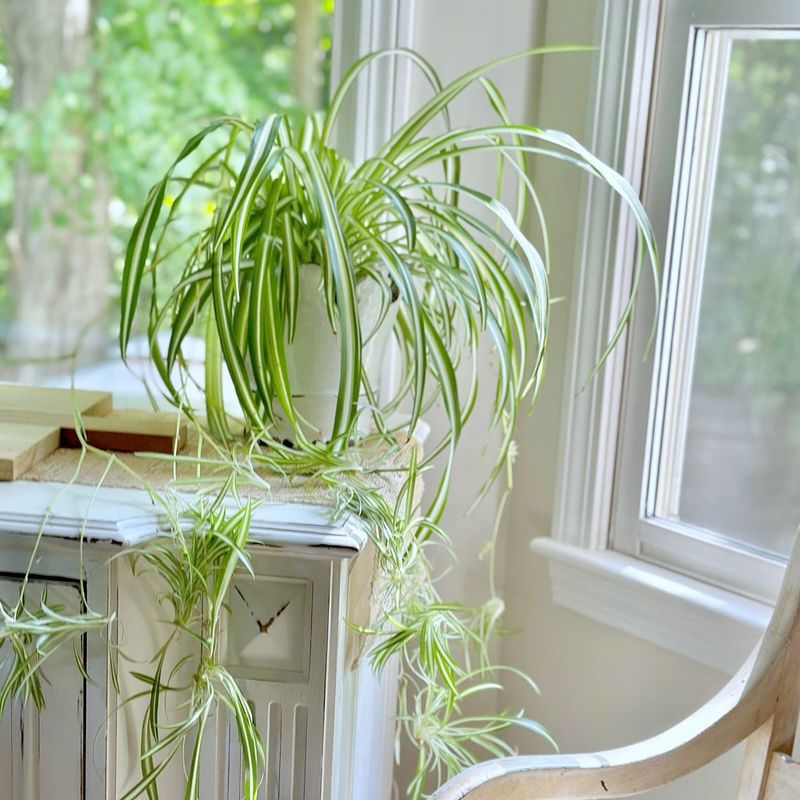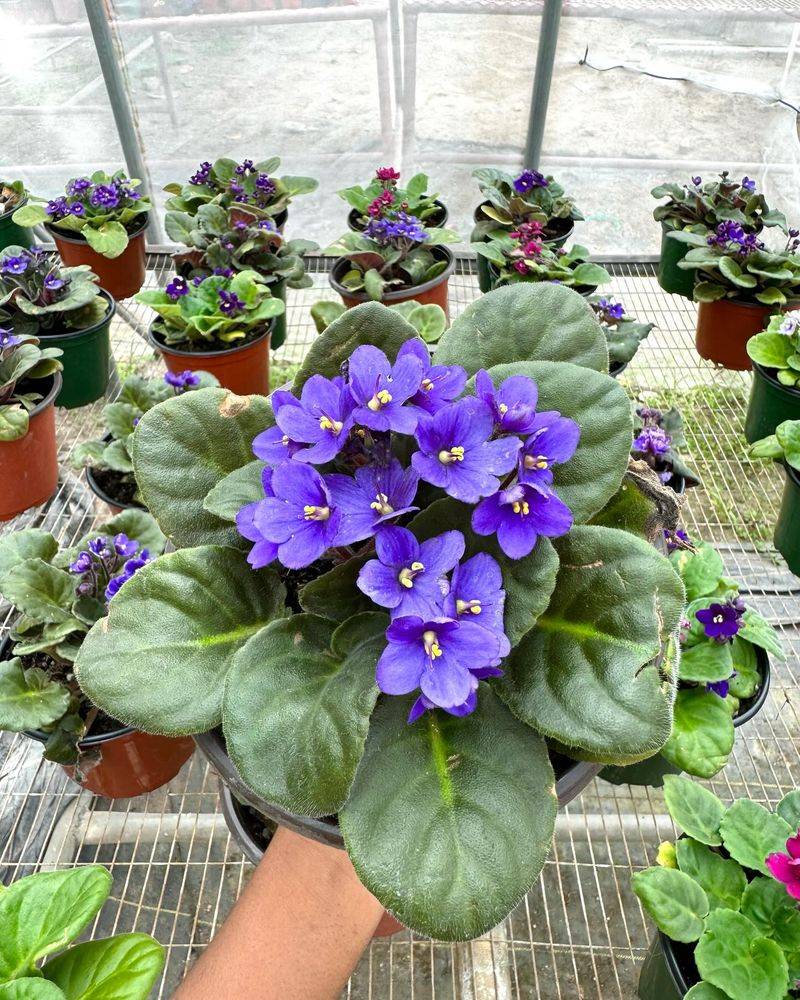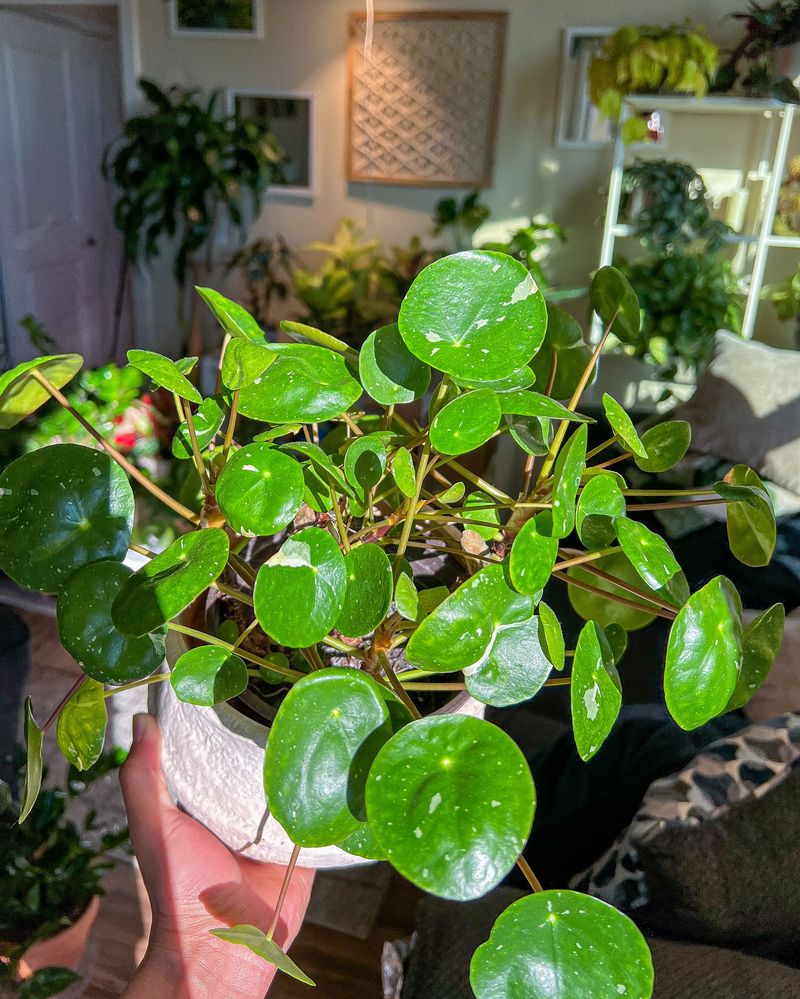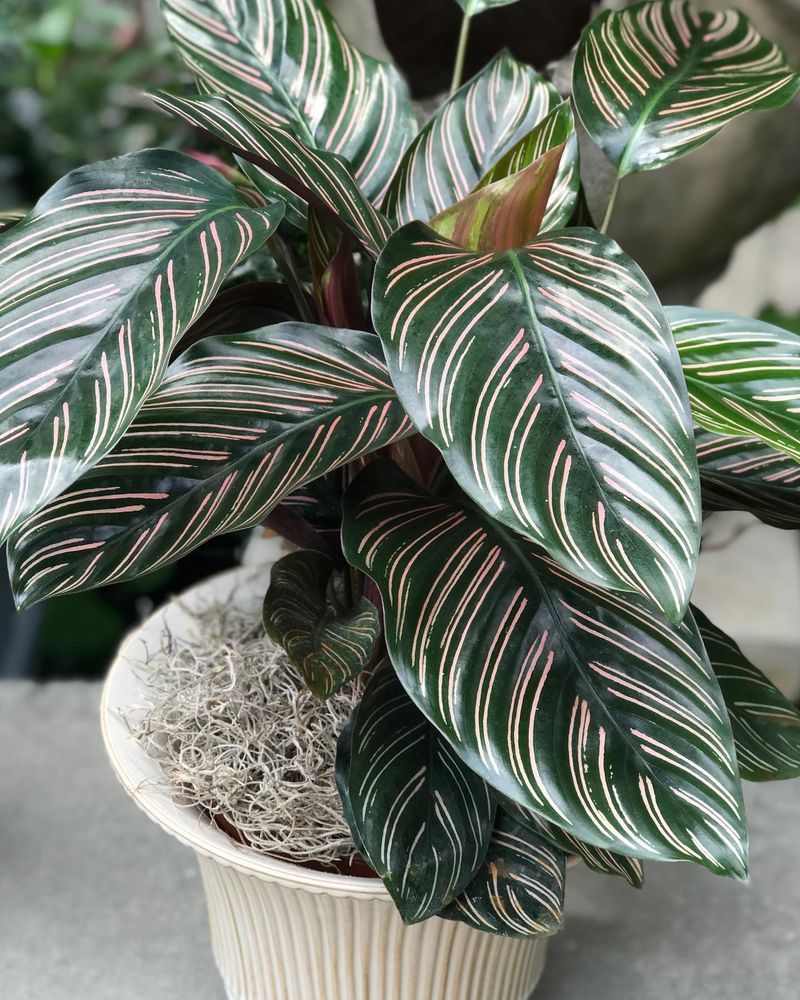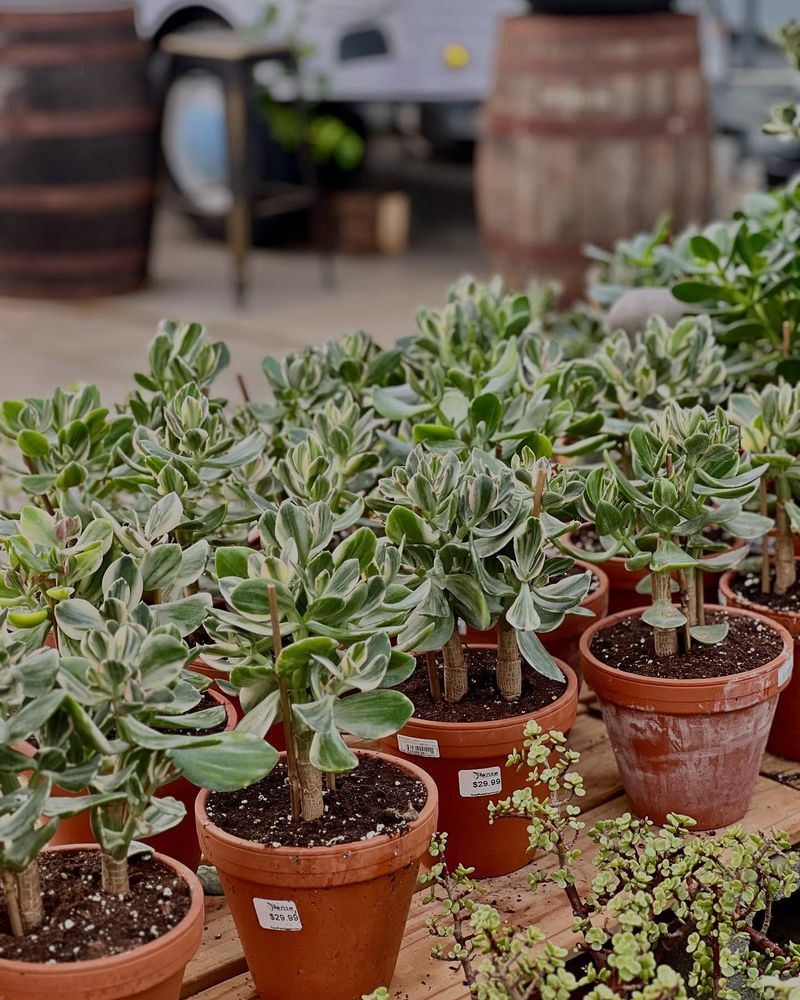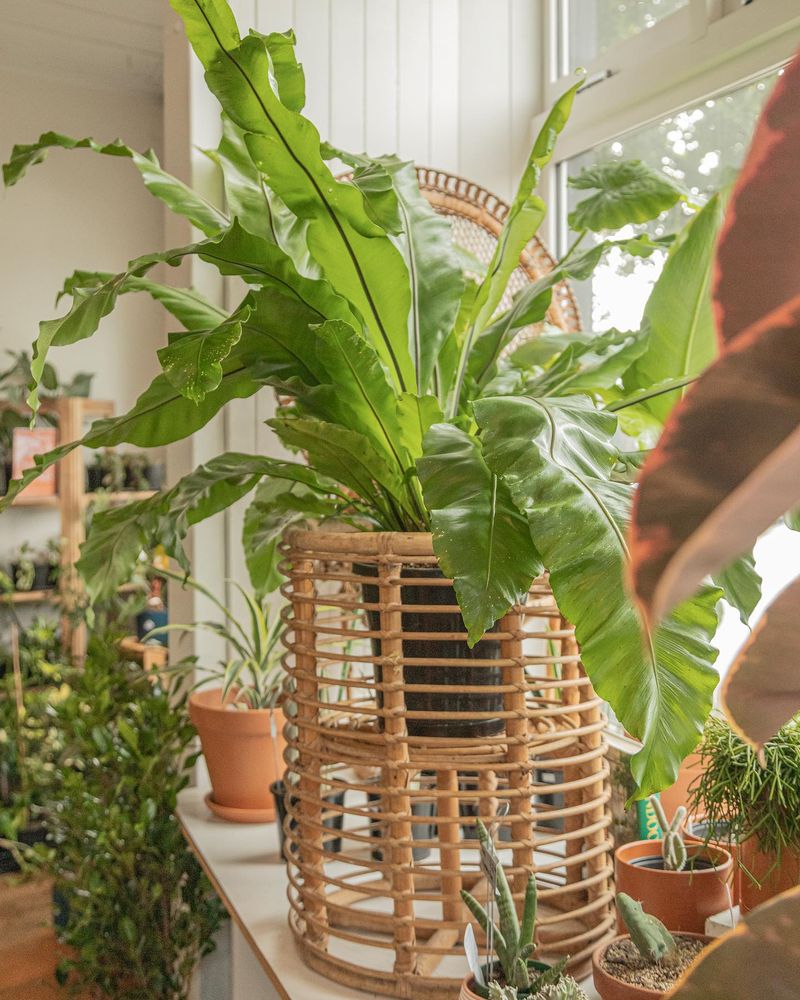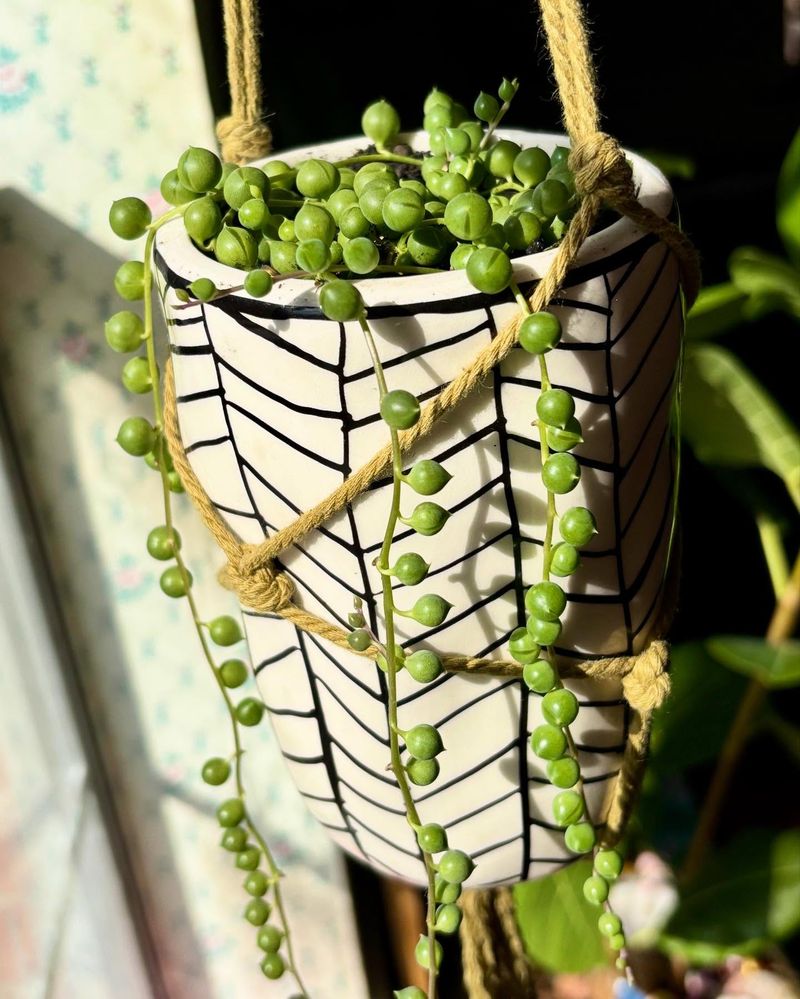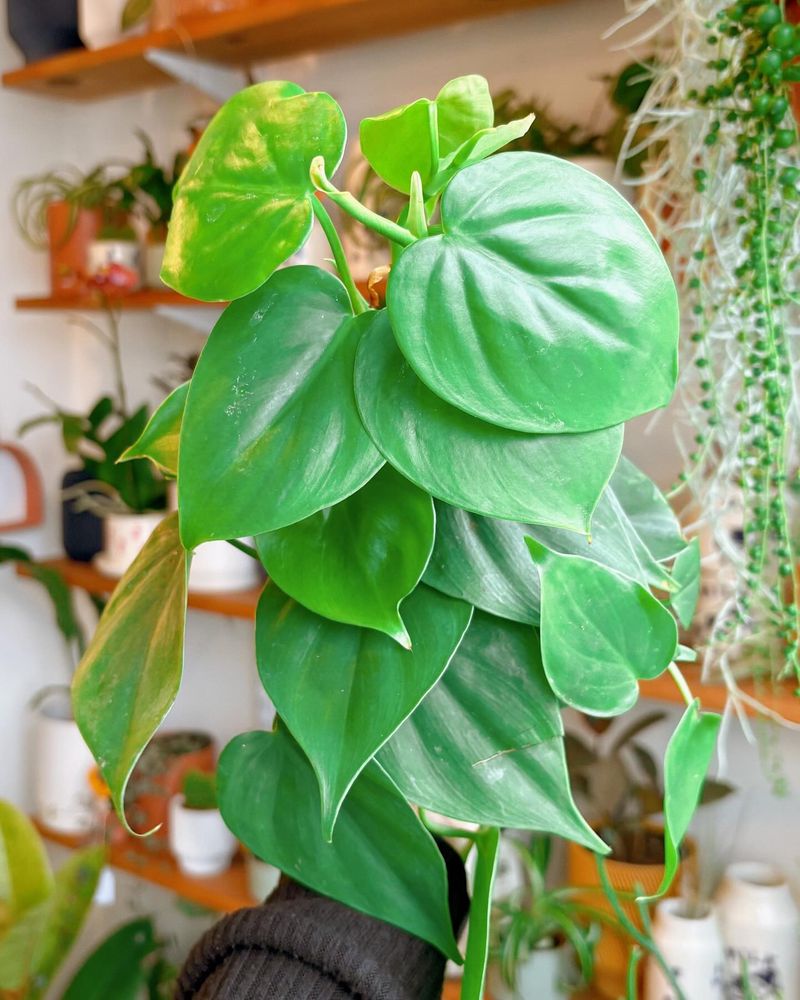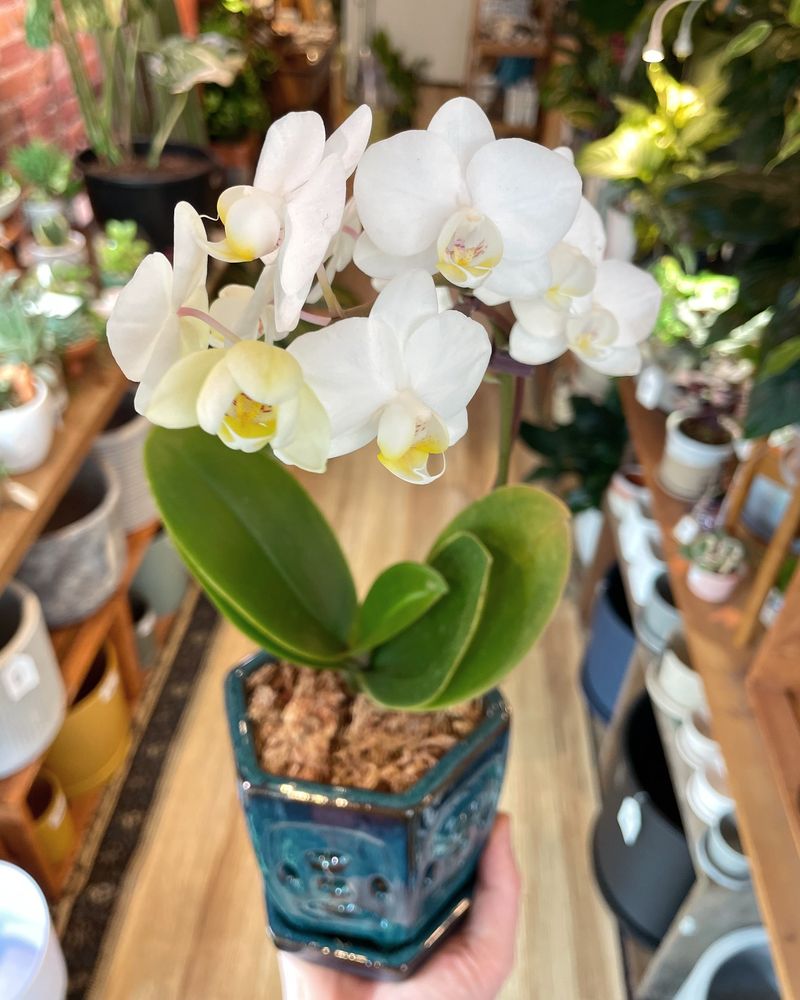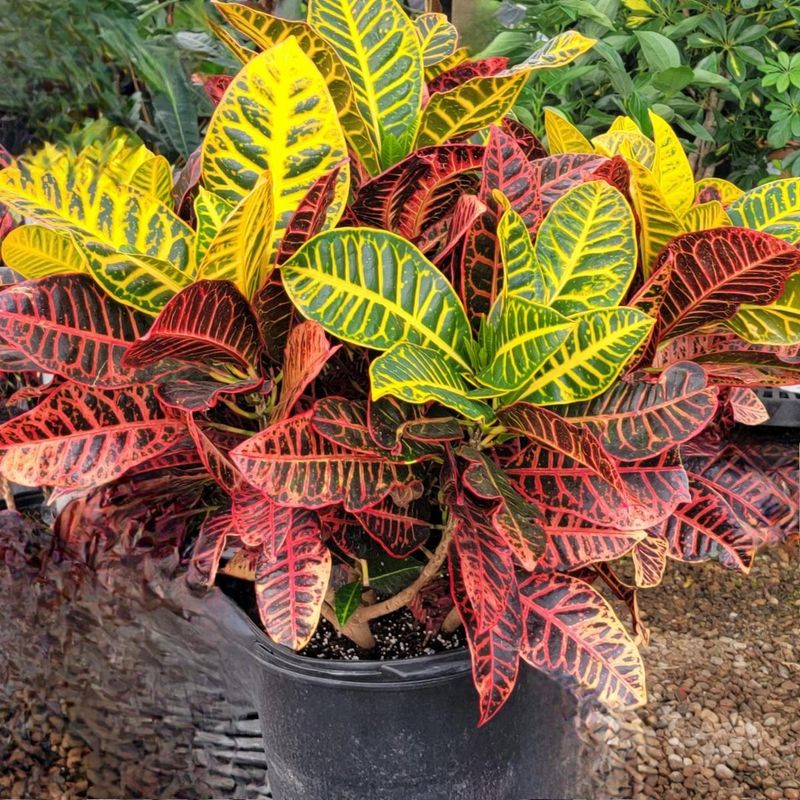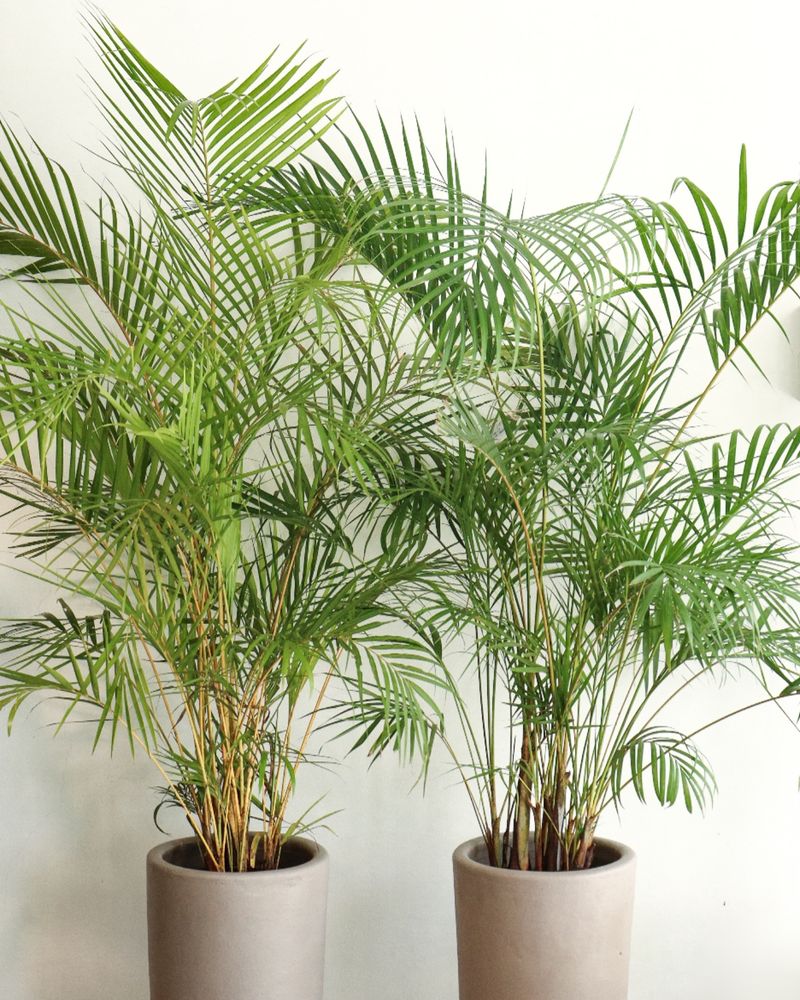You might think your houseplants are happy, but some are silently struggling in their pots. It’s easy to overlook the signs until those vibrant leaves start to droop or fade.
I’ve had my fair share of plant mishaps, and it turns out the pot matters way more than I thought. This list will help you spot the trouble and fix it before your green friends start to suffer.
Let’s make sure your plants feel right at home and keep thriving!
1. Snake Plant
Those stiff, upright leaves are actually sending you an SOS! Snake plants develop powerful root systems that can literally crack their containers when left too long in the same pot.
Repot every 2-3 years into a container just 1-2 inches wider than the current one. Choose terracotta pots to help excess moisture evaporate and prevent the dreaded root rot these sturdy plants secretly fear.
2. Monstera Deliciosa
Your Instagram-famous plant develops an extensive root system that quickly outgrows standard decorative pots. When trapped, those iconic leaf perforations might stop forming altogether.
Look for aerial roots desperately reaching out – that’s your repotting alarm! Size up by 2-3 inches every spring, using well-draining soil mixed with orchid bark. The right pot means more of those stunning fenestrated leaves your followers love.
3. Peace Lily
Dramatic drooping isn’t just about needing water! Peace lilies send clear signals when their roots have no room left to grow, including fewer flowers and constant wilting despite regular watering.
Spring is perfect for giving them a roomier home, about 2 inches larger in diameter. Remove any dark, mushy roots during transfer and use fresh potting mix. Your reward will be abundant white blooms and less theatrical wilting episodes.
4. Fiddle Leaf Fig
These finicky favorites actually develop massive root systems that quickly become strangled in decorative pots. Lower leaves turning brown and dropping isn’t just normal behavior – it’s a distress signal!
Repot your fiddle leaf fig annually in spring using a container 2-3 inches larger. The soil should be barely moist, never soggy. After repotting, place in bright indirect light and resist the urge to relocate for at least two weeks.
5. ZZ Plant
Don’t let their easygoing reputation fool you! ZZ plants develop potato-like rhizomes underground that can become severely compressed in small containers, eventually pushing up and out of the soil.
When you notice growth slowing down or rhizomes breaking the soil surface, it’s time for a new home. Choose a pot just 1-2 inches wider with excellent drainage. These plants actually prefer being slightly rootbound, but ‘slightly’ is the key word.
6. Pothos
Those trailing vines might look happy, but pothos secretly suffer when roots circle endlessly inside too-small pots. The telltale signs include smaller new leaves, slower growth, and stems with bare patches where leaves once grew.
Every two years, gently remove your pothos and divide it if needed. Fresh soil and a slightly larger pot will revitalize those vines! Pro tip: plastic pots work fine for pothos, as they prefer staying slightly moist between waterings.
7. Aloe Vera
Your medicinal friend produces numerous pups that quickly crowd the pot, competing for limited resources. When aloe leaves thin out and flatten instead of staying plump, your plant is silently begging for more space.
Terracotta pots are ideal for these succulents, allowing excess moisture to evaporate. Repot every 2-3 years in spring, removing pups to plant separately. Use cactus soil mixed with extra perlite to keep those healing properties at their peak potential.
8. Rubber Plant
Those glossy leaves hide a secret struggle when rubber plants outgrow their containers. Growth stalls dramatically, and lower leaves yellow and drop at an alarming rate, often mistaken for normal aging.
Choose a pot with 2-3 inches extra space all around when repotting. These plants hate wet feet, so drainage holes are non-negotiable! After repotting, wait until the soil dries out completely before watering to help prevent transplant shock.
9. Boston Fern
Crispy brown fronds aren’t always about humidity – Boston ferns rapidly develop dense root systems that strangle themselves when container-bound. A stressed fern drops fronds faster than you can sweep them up!
Annual repotting keeps these dramatic beauties happy. Choose a hanging basket or pot at least 2 inches larger than the current one. The soil should contain plenty of peat moss to retain moisture without becoming waterlogged.
10. Spider Plant
Those cascading babies (plantlets) are actually a stress response! When spider plants become severely rootbound, they channel energy into reproduction rather than maintaining existing foliage, leading to brown tips and stunted growth.
Every spring, check if roots are circling the bottom by gently removing the plant. Choose a pot 1-2 inches larger with fresh soil. After repotting, you’ll notice fewer babies but much healthier, more vibrant parent plants with greener tips.
11. African Violet
These flowering favorites actually prefer being slightly rootbound, but ‘slightly’ is the key word! When violets stop blooming despite proper light, they’re likely strangling in their pots.
Repot annually using shallow containers rather than deep ones – African violet roots spread outward more than downward. Self-watering pots work wonders for these moisture-sensitive plants. After repotting, expect a bloom hiatus for 2-3 months before flowers return with renewed vigor.
12. Chinese Money Plant
Those coin-shaped leaves tell tales of root happiness! When new leaves emerge smaller or growth slows dramatically, your Pilea is crying for more space to spread its underground network.
Repot every spring using a container just 1-2 inches larger in diameter. These plants prefer well-draining soil that doesn’t stay wet. Watch for rapid improvement – within weeks, larger leaves and better symmetry will emerge as your plant celebrates its newfound freedom.
13. Calathea
Prayer plants curl their leaves at night, but persistent curling throughout the day signals root distress. The intricate patterns fade when calatheas struggle in cramped quarters, losing their famous visual appeal.
Choose plastic or glazed ceramic pots to maintain consistent moisture. Repot annually in spring using fresh soil rich in peat. Handle roots extremely gently during transfer – these divas sulk dramatically when disturbed but recover beautifully in proper containers.
14. Jade Plant
These symbols of prosperity become literally top-heavy in too-small containers! A jade plant’s woody trunk and branches continue expanding while roots have nowhere to go, creating dangerous instability.
Terracotta pots provide ideal weight balance and moisture control. Repot every 2-3 years in spring, moving up just one pot size. Use extremely well-draining cactus soil with extra perlite or pumice added. After repotting, wait two weeks before watering to prevent root rot.
15. Bird’s Nest Fern
The distinctive nest-like center becomes distorted when these ferns outgrow their containers. Fronds develop brown edges despite proper humidity, and the characteristic wavy edges may flatten out.
Unlike many plants, bird’s nest ferns prefer shallow, wide pots rather than deep ones. Repot every 2-3 years in spring, using fresh orchid mix or peat-based soil. Handle the central “nest” with extreme care during transfer – it’s the growth point for all new fronds.
16. String of Pearls
Those charming bead-like leaves become smaller and more widely spaced when roots have nowhere to expand. The strands grow shorter and may break easily when the plant struggles underground.
Shallow pots work best for these succulents since their roots stay close to the surface. Repot every 2 years in spring using cactus soil with extra perlite. The perfect container is wide rather than deep, allowing those signature strands to cascade dramatically.
17. Philodendron
The heart-shaped leaves tell stories of root happiness! When new growth emerges smaller or paler than established leaves, your philodendron is silently screaming for more space.
Spring repotting into a container 2 inches larger works wonders. These adaptable plants aren’t picky about pot material but insist on drainage holes. After repotting, place in bright indirect light and watch for an explosion of vibrant new growth within weeks.
18. Orchid
Contrary to popular belief, orchids actually enjoy being somewhat rootbound! However, when roots start growing horizontally across the media surface or the plant hasn’t bloomed in years, intervention is needed.
Clear plastic pots allow you to monitor root health easily. Repot every 2-3 years using fresh orchid bark, not regular potting soil. Choose a container just 1 inch larger than the root mass. After repotting, expect a blooming hiatus before flowers return with renewed vigor.
19. Croton
Those vibrant leaf colors fade when crotons become rootbound! The dramatic foliage loses its famous variegation, reverting to mostly green when roots have no room to expand and access nutrients.
Spring is ideal for repotting into a container 2 inches larger in diameter. Use fresh, well-draining potting mix. These tropical beauties hate cold drafts after repotting, so keep them in warm, stable environments. Colors will intensify within months in their spacious new home.
20. Areca Palm
Yellow fronds aren’t always about watering issues! Areca palms develop extensive root systems that quickly outgrow decorative pots, leading to nutrient deficiencies and frond discoloration.
Repot every 2-3 years in spring, moving up just one pot size. These plants prefer being somewhat rootbound, but ‘somewhat’ is the operative word. After repotting, place in bright indirect light and trim any yellow fronds to encourage fresh, green growth.

